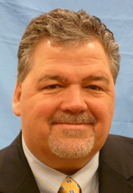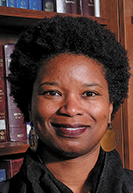Subscriber Benefit
As a subscriber you can listen to articles at work, in the car, or while you work out. Subscribe NowWhen Scottie Kincade was charged with knowing or intentional murder, felony murder while committing arson and Level 4 felony arson in the death his long-time girlfriend, he did what many defendants do — pointed his finger at someone else.
The Warren County man and his girlfriend, Heather Smith, were together for 20 years in what court documents describe as a “violent and combative relationship” that produced three children. Smith was trying to break away, dating other men, planning to move to Kansas and obtaining another protective order.
However, on Sept. 27, 2016, black smoke began rising from her home in Williamsport around lunchtime, and when the blaze was finally extinguished, Smith’s body was discovered near the bedroom. Kincade was arrested the next morning.

Six weeks before the trial was set to begin, Prosecutor John Larson was confident of getting a guilty verdict, but Kincade was making some accusations that might have caused the jury to hesitate. He was pointing to the convicted arsonist who lived a block away from Smith and to one of Smith’s gentlemen friends who had a date for lunch with her on the day she died.
Larson said the prosecution had “oodles and oodles of cellphone records,” but pulling out more than cursory information would have been too time-consuming and laborious. By chance, he had learned of a partnership the Tippecanoe County prosecutor had with Purdue University to examine the digital data, namely cellphone records, collected in connection to a crime.
The prosecutor secured an invitation to Purdue and watched for about an hour as the researcher put the thousands of pages of cellphone data into the software.
Before his eyes, the numbers revealed the arsonist and gentleman friend were nowhere near the house at the time of the fire and that, among other damning evidence, Kincade called or texted Smith 65 times the morning of the fire but did not send one message after 12 o’clock.
“We were able to eliminate two really viable fall guys for the crime by using the digital evidence,” Larson said.
The technology and expertise that Larson was able to use to help convict Kincade will soon be available to prosecutors throughout the state.
With a total two-year appropriation of $6 million from the state, the Indiana Prosecuting Attorneys Council is working with local prosecuting offices to establish 10 high-tech crime units that will be able to process and analyze digital evidence collected by law enforcement starting in 2022. Each high-tech unit will be placed in a host county that will serve as a regional hub for the surrounding counties.
Also, most of the prosecutors’ offices hosting high-tech crime units will be partnering with a nearby college or university. The exception is Dearborn County, but according to IPAC, that prosecutor’s office has already been processing digital evidence on its own.

The units will be modeled after teams created by the prosecutors in Tippecanoe and St. Joseph counties. These offices have been partnering for a handful of years with their respective local universities, Purdue and Notre Dame, to scour digital data to track and identify where a suspect was and to whom he or she was speaking.
“The digital evidence has just increased exponentially in the last five to 10 years,” said Chris Naylor, IPAC executive director. “We’re not talking about just computer-related crimes. It’s virtually every murder, homicide and serious violent felony because the world lives on their phones.”
Double-checking
The units were created through House Enrolled Act 1082, authored in 2021 by Rep. Greg Steuerwald, R-Avon.
At the House Court and Criminal Code Committee hearing, the Indiana Public Defender Council was neutral on the bill but asked for parity, allowing public defenders to have access to the units, as well.
The law signed by Gov. Eric Holcomb does not mention public defenders. Of the program’s $3 million annual appropriation, each high-tech unit will receive $285,000 per year to be used for personnel as well as computer hardware and software, according to Naylor.

Bernice Corley, IPDC executive director, said she sees the new law as part of the public defenders’ struggle on multiple fronts for equal funding and resources. While the prosecutors are fully state supported, public defenders are reliant on their respective counties to pay for salaries and other expenses.
“The concern is that we don’t have the ability to independently verify the information on the defense side,” Corley said of the high-tech units. “The defense should not be wholly dependent on the state to say what the evidence is.”
Some prosecutors maintained that even though their units will be doing the examination of the digital data, the process may still uncover evidence that actually clears someone suspected of any wrongdoing.
Ashley Spolarich, Tippecanoe County deputy public defender, was skeptical. She said she does not foresee prosecutors just dropping a person as a suspect if they go to the trouble of getting a search warrant and confiscating that individual’s cellphone, computer and other electronic devices.
Even when the prosecution is certain it has the person responsible for the crime, Spolarich noted digital evidence is not foolproof. The triangulation data from cellphone towers can differ between providers, she said, so public defenders need to have the funding to pay for their own experts to review the digital files, which “looks like gibberish at times.”
Consequently, the rollout of these new high-tech units for prosecutors’ use adds to the public defenders’ burden, Spolarich continued. By providing money to only one side, everything gets thrown out of balance and makes the system unfair.
“I believe it is important to still have an expert go through that type of evidence to make sure that what the state is presenting is, in fact, accurate,” Spolarich said. “If you can’t challenge either the validity or how it was obtained, there’s always this kind of secondary thing where we are frequently double-checking the work the state is doing to make sure that they are not portraying the digital evidence in a biased light.”
Phones are personal
When prosecutors talk of digital evidence, they are mostly referring to data collected from cellphones.

And while these devices can get misplaced or stolen, Delaware County Prosecutor Eric Hoffman said not only does almost everyone own a smartphone, but they carry it with them at all times.
In fact, Hoffman surmised that so much personal information is now accessible on each person’s cellphone that given the choice between having their phones or homes searched, most people would opt to turn over the keys to their front doors.
“Everything about you is on your phone,” Hoffman said.
Cellphone data presented at trial, then, can be very powerful, the prosecutor said. While some perpetrators purposely leave their cellphones behind, they often have them during the commission of the crimes, and the information obtained from the devices can link the suspects to illegal acts.
The murder conviction of Jeremy Holland is one example. The Muncie man denied his involvement with the execution-style killing of Jeffrey Brown, but cellphone records placed Holland at the house where the victim was tied up at gunpoint and the secluded property where the victim was shot multiple times.
Hoffman’s office and Ball State University will be collaborating to host one of the high-tech units.
Zachary Craig, the Delaware County chief deputy prosecutor who led the prosecution in the Holland case, called the new unit a “gamechanger.” The analysis of the data will be done quickly, he said, which could enable law enforcement to get the information and ascertain the truthfulness of a suspect during the interrogation.
“It will open so many more doors for law enforcement,” Craig said.•
Please enable JavaScript to view this content.

